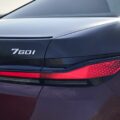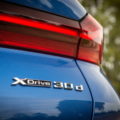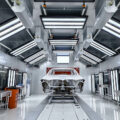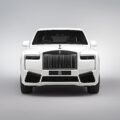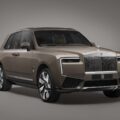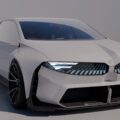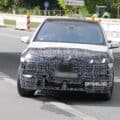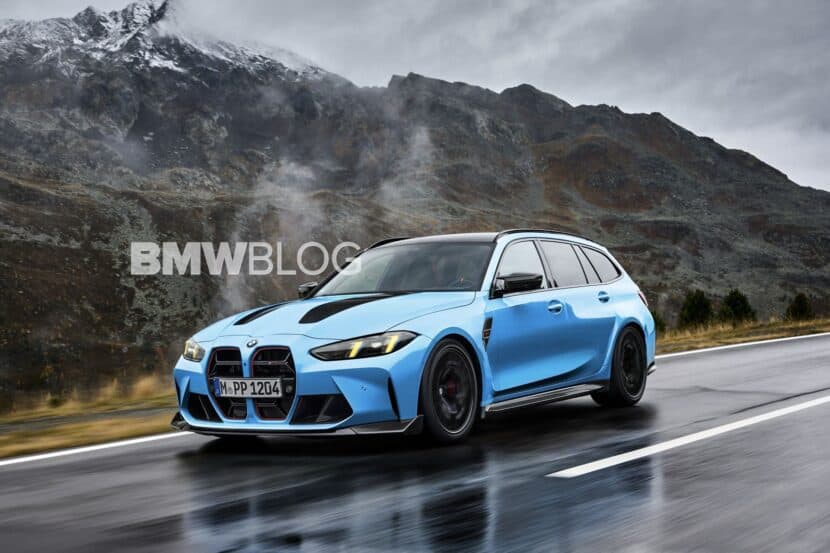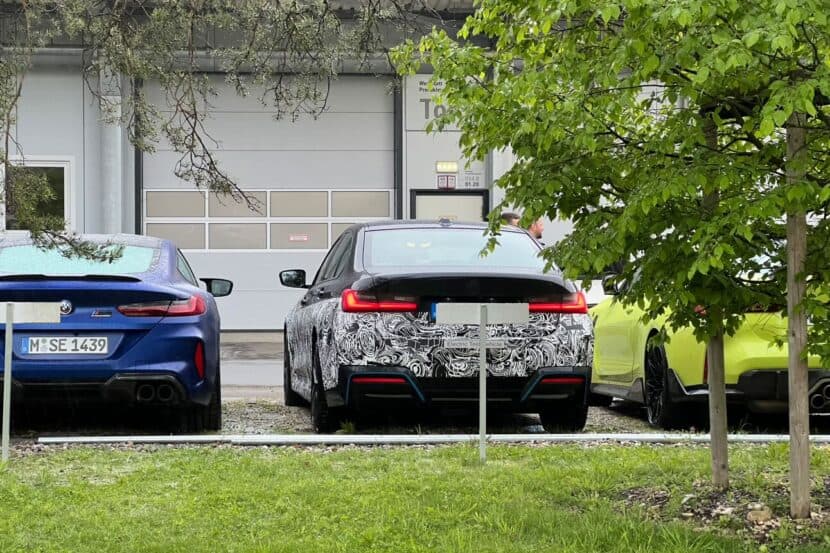The upcoming 2018 BMW G20 3 Series was spotted during winter testing near the BMW Test Center in Arjeplog. The new generation of the midsize sedan is still heavily camouflaged hiding most the design details from the prying eyes of by-passers or in this case, spy photographers. Judging by the early spy shots and videos, it’s evident that the G20 3 Series will have taken some design cues from the latest BMW 7 Series. This was to be expected and it’s a welcome change here. The headlights have slimmed down quite a bit on this G20 compared to the current F30 generation. They seem to be much narrower and the kidney grilles seem to have grown a bit, with less bars inside of them. So it is definitely taking some front end design from its bigger brother.
The front overhang is still very short and the Hofmeister Kink also remains. Aside from that, there really isn’t much to see, though. The rear end not only has camouflage on it, but the taillights are covered in faux taillight covers to hide the actual design.
When looking at the aerodynamics of the test car, it’s striking that there are no air outlets for the Air Breathers. Whether BMW passed on this aerodynamic solution or the absence of such elements is due to the early stage of the current 3 Series prototypes, remains to be seen.
The underpinnings of the G20 3 Series come from the CLAR platform. The modular architecture provides high flexibility, multi-material capability, improved stiffness and lower weight. CLAR can be used with four different drive concept – petrol / diesel, hybrid, electric BEV, fuel cell FCEV. To get this complexity under control, BMW developed – for vehicles with an alternative engine – a new centerpiece housed between the axles: the so-called flat memory module. If it sounds familiar is because a similar approach is also used by Audi, Mercedes and Porsche. Also planned are innovative, scalable lighting technology – in the top model with lasers and OLEDs – more stability control systems, Integral Active Steering, active anti-roll bars, progressive rear axle and a new generation of brakes for 3 and 4 Series.
BMW is also working on the modernization of its current engine kit. The start of production of the 3 Series – scheduled for summer of 2018 – will coincide with the launch of an electrically driven compressor (instant torque), more powerful 48V systems and an advanced regen system that can recirculate 20 kW and more.
Electric or partially electric driving follows four steps:
- A plug-in hybrid with four-cylinder gasoline engine, but significantly more power than the current 330e.
- An eDrive sport with more battery power (75 to 90 kWh), greater range and a shorter charging time.
- After 2020, an eDrive BEV with similar equipment built in China for the long wheelbase electric 5 Series.
- After 2025, depending on the conditions, probably also as a fuel cell.
BMW will also continue to offer a combination of four and six-cylinder powerplants, both in diesel and petrol.
Click below for the video:



